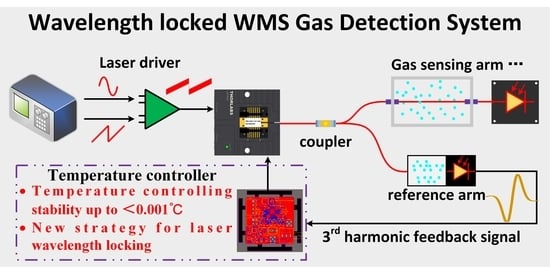Ultra-Stable Temperature Controller-Based Laser Wavelength Locking for Improvement in WMS Methane Detection
Abstract
:1. Introduction
2. Methodology Demonstration
3. Experiment Verification
3.1. Ultra-Stable Temperature Controller Development
3.2. Laser Wavelength Locking Evaluation
3.3. CH4 Detection Improvement Based on the Wavelength-Locked WMS System
4. Conclusions
Author Contributions
Funding
Institutional Review Board Statement
Informed Consent Statement
Data Availability Statement
Conflicts of Interest
References
- Miyashita, T.; Kondo, T.; Ikeda, K.; Yoshii, K.; Hong, F.; Horikir, T. Offset-locking-based frequency stabilization of external cavity diode lasers for long-distance quantum communication. Jpn. J. Appl. Phys. 2021, 60, 122001. [Google Scholar] [CrossRef]
- Gerginov, V.; Shah, V.; Knappe, S.; Hollberg, L.; Kitching, J. Atomic-based stabilization for laser-pumped atomic clocks. Opt. Lett. 2006, 31, 1851–1853. [Google Scholar] [CrossRef] [PubMed]
- Fortier, T.M.; Kirchner, M.S.; Quinlan, F.; Taylor, J.; Bergquist, J.C.; Rosenband, T.; Lemke, N.; Ludlow, A.; Jiang, Y.; Oates, C.W.; et al. Generation of Ultrastable Microwaves via Optical Frequency Division. Nat. Photonics 2011, 5, 425–429. [Google Scholar] [CrossRef]
- LIGO Scientific Collaboration. LIGO: The Laser Interferometer Gravitational-Wave Observatory. Rep. Prog. Phys. 2009, 72, 076901. [Google Scholar] [CrossRef]
- Wiens, E.; Nevsky, A.Y.; Schiller, S. Resonator with Ultrahigh Length Stability as a Probe for Equivalence-Principle-Violating Physics. Phys. Rev. Lett. 2016, 117, 271102. [Google Scholar] [CrossRef]
- Thorpe, M.J.; Moll, K.D.; Jones, R.J.; Safdi, B.; Ye, J. Broadband cavity ringdown spectroscopy for sensitive and rapid molecular detection. Science 2006, 311, 1595–1599. [Google Scholar] [CrossRef]
- Wang, H.M.; Xu, Z.S.; Ma, S.C.; Cai, M.H.; You, S.H.; Liu, H.P. Artificial modulation-free Pound–Drever–Hall method for laser frequency stabilization. Opt. Lett. 2019, 44, 5816–5819. [Google Scholar] [CrossRef]
- Ohta, Y.; Maehara, S.; Hasebe, K.; Kurosaki, Y.; Sato, T.; Ohkawa, M.; Maruyama, T.; Tsubokawa, T. Frequency stabilization of a semiconductor laser using the Rb saturated absorption spectroscopy. Phys. Simul. Optoelectron. Devices XIV 2006, 6115, 77–86. [Google Scholar]
- Pryde, G.; Böttger, T.; Cone, R.; Ward, R. Semiconductor lasers stabilized to spectral holes in rare earth crystals to a part in 1013 and their application to devices and spectroscopy. J. Lumines. 2002, 98, 309–315. [Google Scholar] [CrossRef]
- Matthey, R.; Affolderbach, C.; Mileti, G. Methods and evaluation of frequency aging in distributed-feedback laser diodes for rubidium atomic clocks. Opt. Lett. 2011, 36, 3311–3313. [Google Scholar] [CrossRef]
- Van Leeuwen, N.J.; Diettrich, J.C.; Wilson, A.C. Periodically Locked Continuous-Wave Cavity Ringdown Spectroscopy. Appl. Opt. 2003, 42, 3670–3677. [Google Scholar] [CrossRef] [PubMed]
- He, Q.; Lou, M.; Zheng, C.; Ye, W.; Wang, Y.; Tittel, F.K. Repetitively Mode-Locked Cavity-Enhanced Absorption Spectroscopy (RML-CEAS) for Near-INFRARED Gas Sensing. Sensors 2017, 17, 2792. [Google Scholar] [CrossRef] [PubMed]
- Wang, F.; Cheng, Y.; Xue, Q.; Wang, Q.; Liang, R.; Wu, J.; Sun, J.; Zhu, C.; Li, Q. Techniques to enhance the photoacoustic signal for trace gas sensing: A review. Sens. Actuator A Phys. 2022, 345, 113807. [Google Scholar] [CrossRef]
- Wang, Z.; Wang, Q.; Zhang, W.P.; Wei, H.Y.; Li, Y.; Ren, W. Ultrasensitive photoacoustic detection in a high-finesse cavity with Pound-Drever-Hall locking. Opt. Lett. 2019, 44, 1924–1927. [Google Scholar] [CrossRef]
- Wang, Z.; Wang, Q.; Zhang, H.; Borri, S.; Galli, L.; Sampaolo, A.; Patimisco, P.; Spagnolo, V.L.; De Natale, P.; Ren, W. Doubly resonant sub-ppt photoacoustic gas detection with eight decades dynamic range. Photoacoustics 2022, 27, 100387. [Google Scholar] [CrossRef]
- Zhang, H.; Wang, Z.; Wang, Q.; Borri, S.; Galli, I.; Sampaolo, A.; Patimisco, P.; Spagnolo, V.L.; De Natale, P.; Ren, W. Parts-per-billion-level detection of hydrogen sulfide based on doubly resonant photoacoustic spectroscopy with line-locking. Photoacoustics 2023, 29, 100436. [Google Scholar] [CrossRef]
- Wang, F.; Chang, J.; Wang, Q.; Wei, W.; Qin, Z. TDLAS gas sensing system utilizing fiber reflector based round-trip structure: Double absorption path-length, residual amplitude modulation removal. Sens. Actuators A Phys. 2017, 259, 152–159. [Google Scholar] [CrossRef]
- Farooq, A.; Alquaity, A.B.; Raza, M.; Nasir, E.F.; Yao, S.; Ren, W. Laser sensors for energy systems and process industries: Perspectives and directions. Prog. Energy Combust. Sci. 2022, 91, 100997. [Google Scholar] [CrossRef]
- Liu, C.; Xu, L. Laser absorption spectroscopy for combustion diagnosis in reactive flows: A review. Appl. Spectrosc. Rev. 2019, 54, 1–44. [Google Scholar] [CrossRef]
- Goldenstein, C.S.; Spearrin, R.M.; Jeffries, J.B.; Hanson, R.K. Infrared Laser-absorption sensing for combustion gases. Prog. Energy Combust. Sci. 2016, 60, 132–176. [Google Scholar] [CrossRef]
- Koch, G.J. Automatic laser frequency locking to gas absorption lines. Opt. Eng. 2003, 42, 1690–1693. [Google Scholar] [CrossRef]
- Dong, L.; Yin, W.; Ma, W.; Jia, S. A novel control system for automatically locking a diode laser frequency to a selected gas absorption line. Meas. Sci. Technol. 2007, 18, 1447–1452. [Google Scholar] [CrossRef]
- Wang, Q.; Wang, Z.; Ren, W. Wavelength-stabilization-based photoacoustic spectroscopy for methane detection. Meas. Sci. Technol. 2017, 28, 065102. [Google Scholar] [CrossRef]
- Zhang, H.; Jin, W.; Hu, M.; Hu, M.; Liang, J.; Wang, Q. Investigation and Optimization of a Line-Locked Quartz Enhanced Spectrophone for Rapid Carbon Dioxide Measurement. Sensors 2021, 21, 5225. [Google Scholar] [CrossRef] [PubMed]
- Cheng, Y.; Wang, F.; Wu, J.; Liang, R.; Wang, Q.; Wei, Y.; Sun, J.; Li, Q.; Xue, Q. Ultra-stable Laser Wavelength Locking Technique Optimized for WMS-based Methane Detection. IEEE Sens. J. 2023, 23, 6757–6768. [Google Scholar] [CrossRef]
- Kehl, F.; Cretu, V.F.; Willis, P.A. Open-source lab hardware: Driver and temperature controller for high compliance voltage, fiber-coupled butterfly lasers. HardwareX 2021, 10, 00240. [Google Scholar] [CrossRef]
- Xu, L.; Liu, C.; Jing, W.; Cao, Z.; Xue, X.; Lin, Y. Tunable diode laser absorption spectroscopy-based tomography system for on-line monitoring of two-dimensional distributions of temperature and H2O mole fraction. Rev. Sci. Instrum. 2016, 87, 013101. [Google Scholar] [CrossRef]
- Peng, W.Y.; Strand, C.L.; Hanson, R.K. Analysis of laser absorption gas sensors employing scanned-wavelength modulation spectroscopy with 1f-phase detection. Appl. Phys. B 2019, 126, 17. [Google Scholar] [CrossRef]
- Wang, F.; Liang, R.; Xue, Q.; Wang, Q.; Wu, J.; Cheng, Y.; Sun, J.; Li, Q. A novel wavelength modulation spectroscopy gas sensing technique with an ultra-compressed wavelength scanning bandwidth. Spectroc. Acta Pt. A Molec. Biomolec. Spectr. 2022, 280, 121561. [Google Scholar] [CrossRef]
- Wang, B.; Tang, X.; Gan, Y.; Li, X.; Lu, Y. A TC/WMS-TDLAS mid-infrared detection method for ultra-low concentration carbon isotope methane. J. Anal. At. Spectrom. 2022, 37, 2615–2624. [Google Scholar] [CrossRef]
- Shen, S.; Li, W.; Wang, M.; Wang, D.; Li, Y.; Li, D. Methane near-infrared laser remote detection under non-cooperative target condition based on harmonic waveform recognition. Infrared Phys. Technol. 2022, 120, 103977. [Google Scholar] [CrossRef]
- Dang, J.; Zhang, J.; Dong, X.; Kong, L.; Yu, H. A trace CH4 detection system based on DAS calibrated WMS technique. Spectrochim. Acta Part A Mol. Biomol. Spectrosc. 2022, 266, 120418. [Google Scholar] [CrossRef] [PubMed]
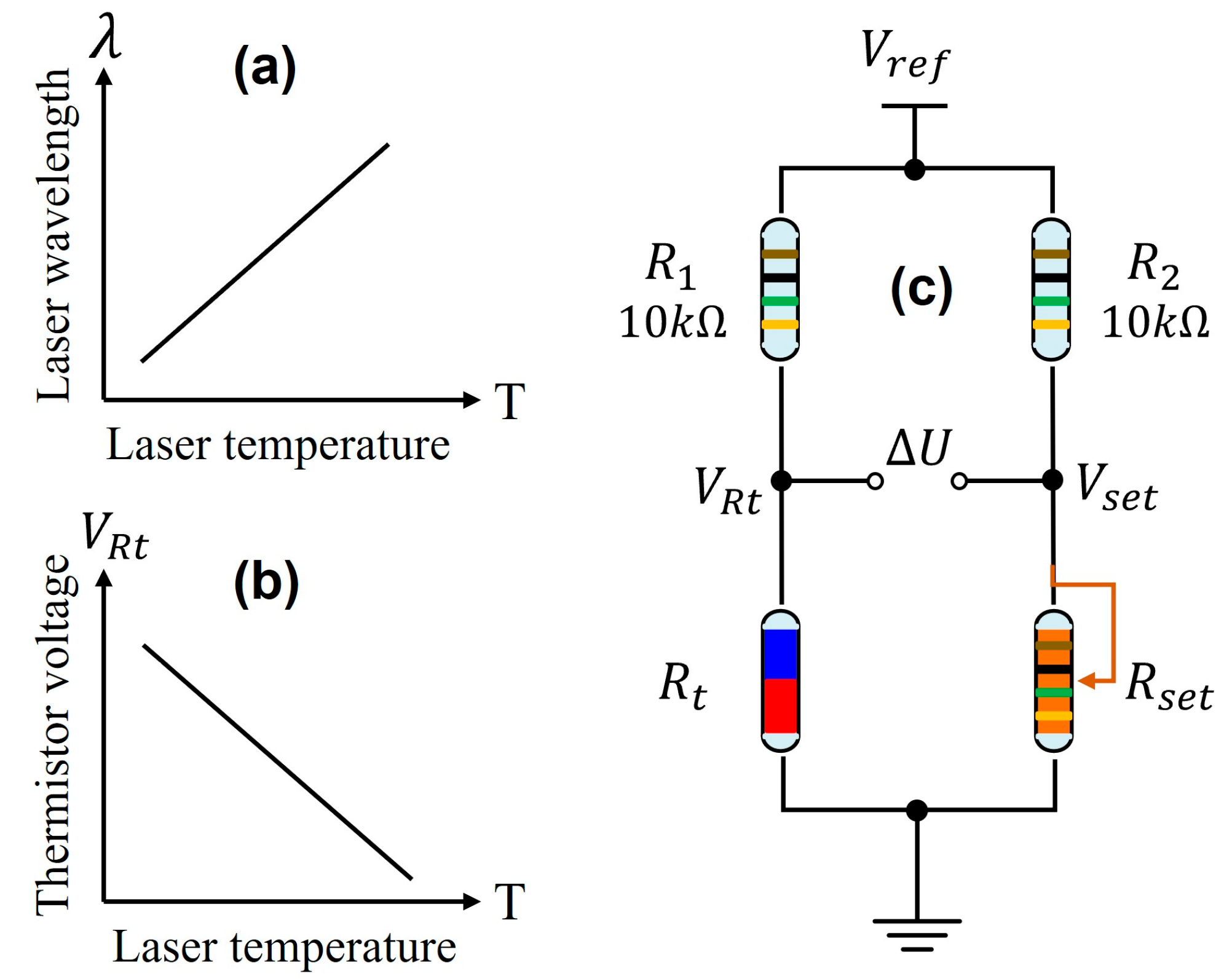
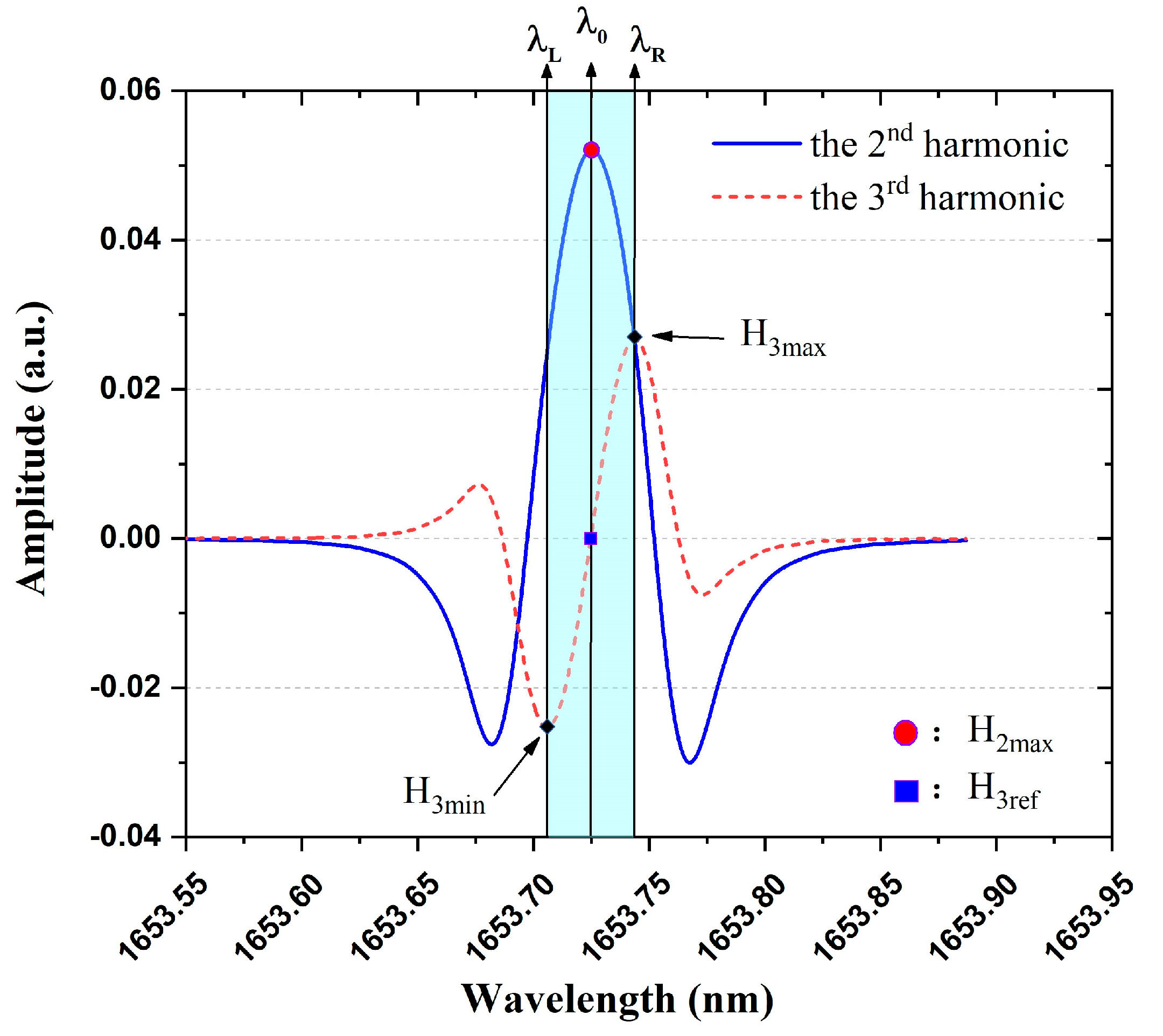


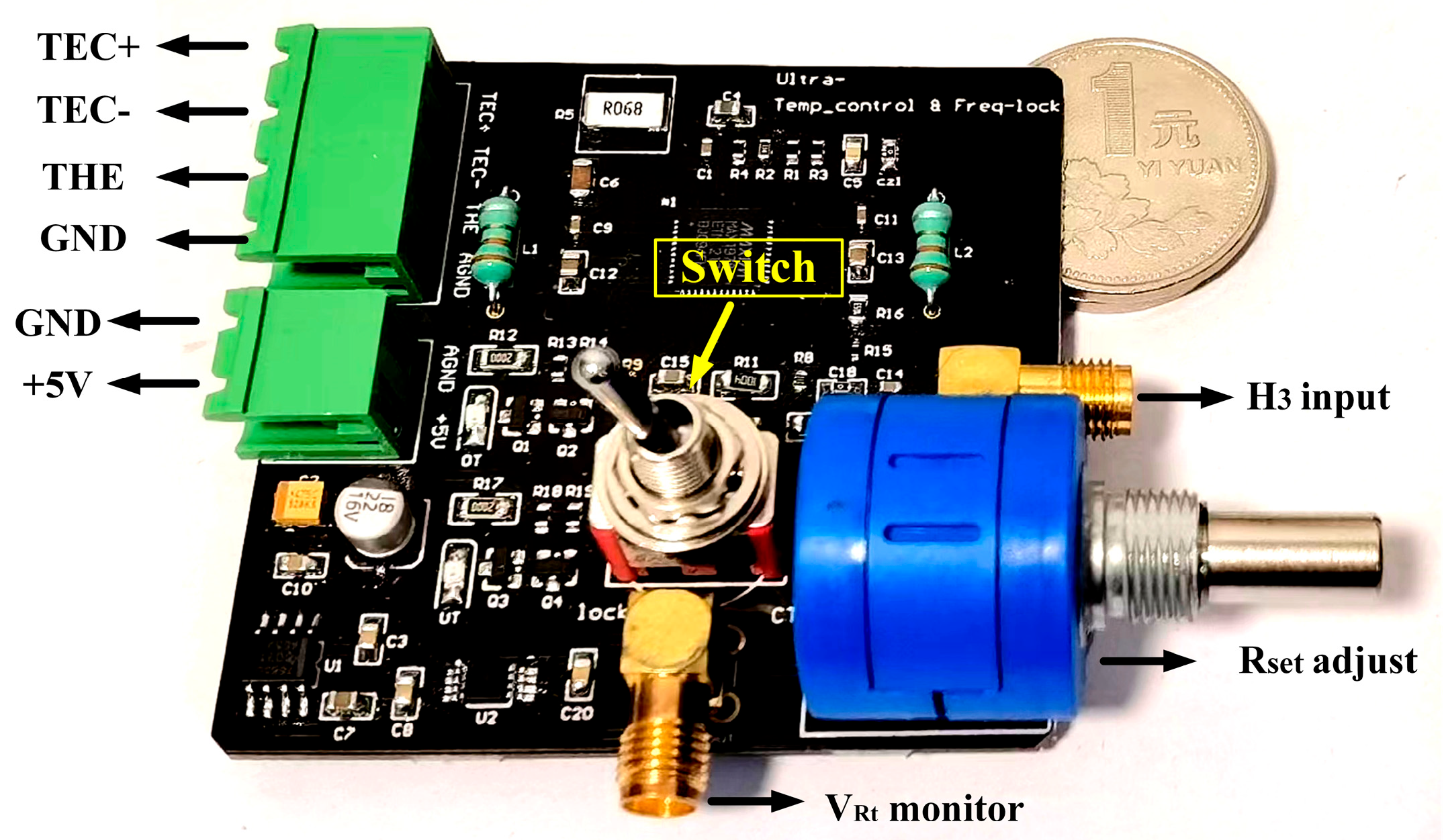
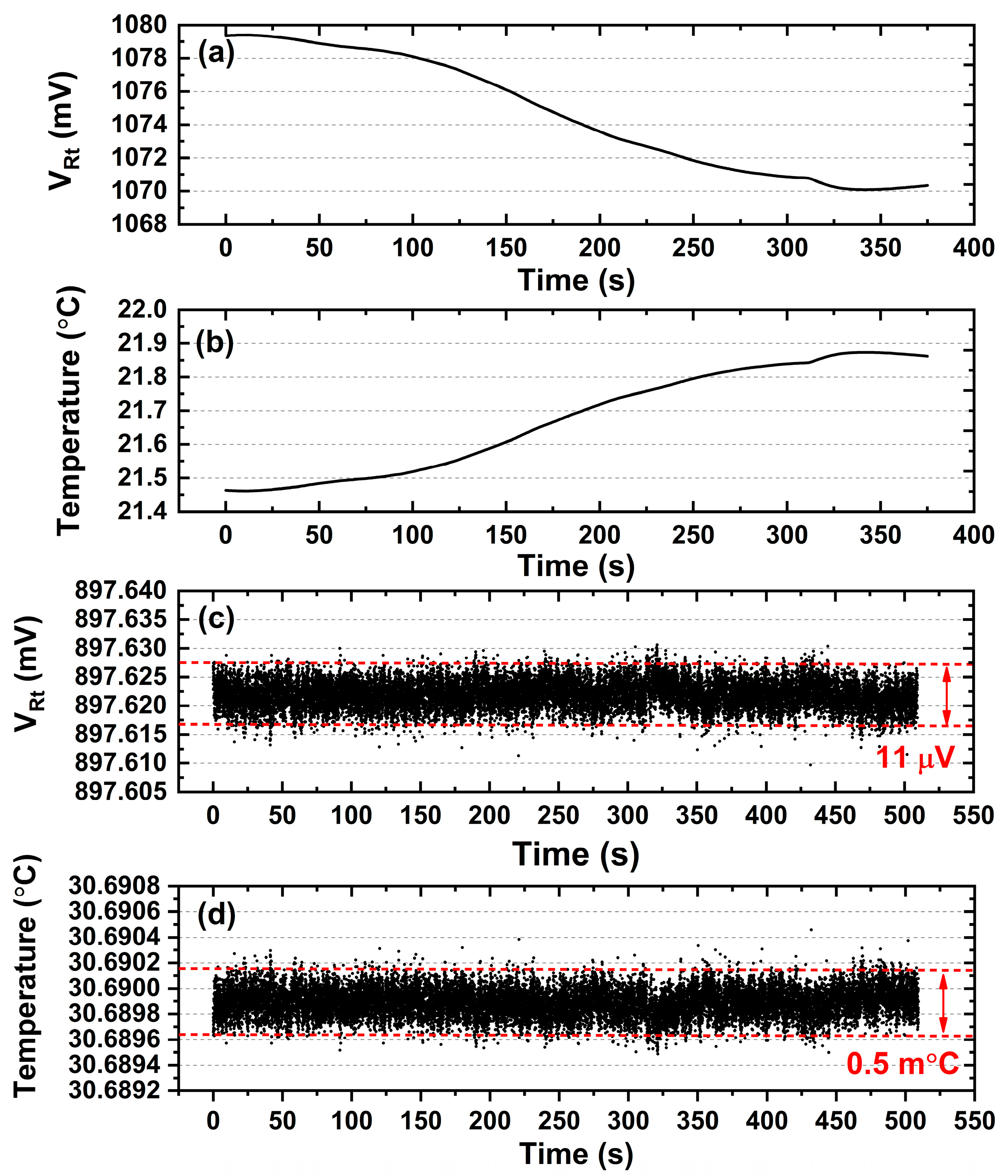
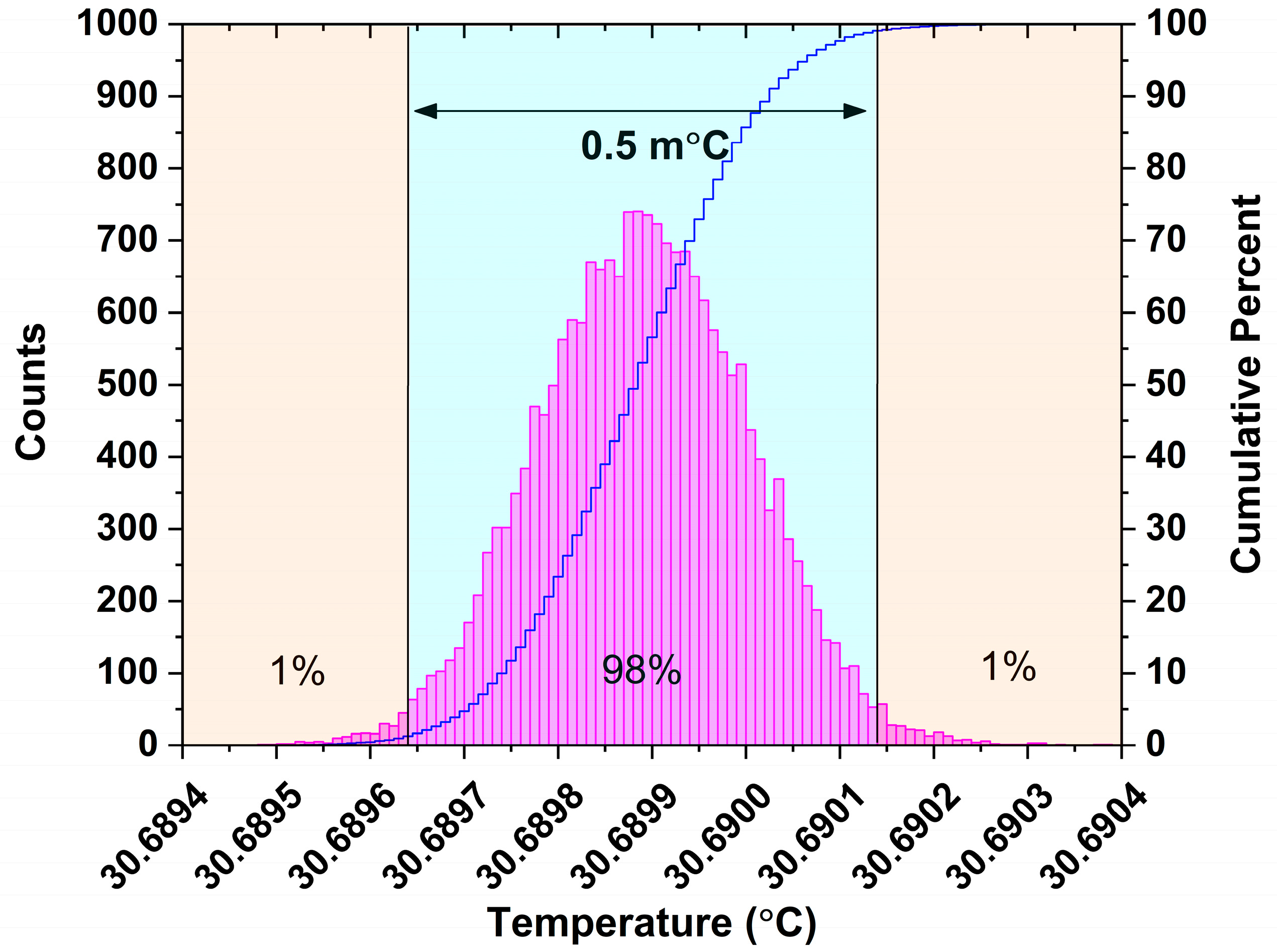
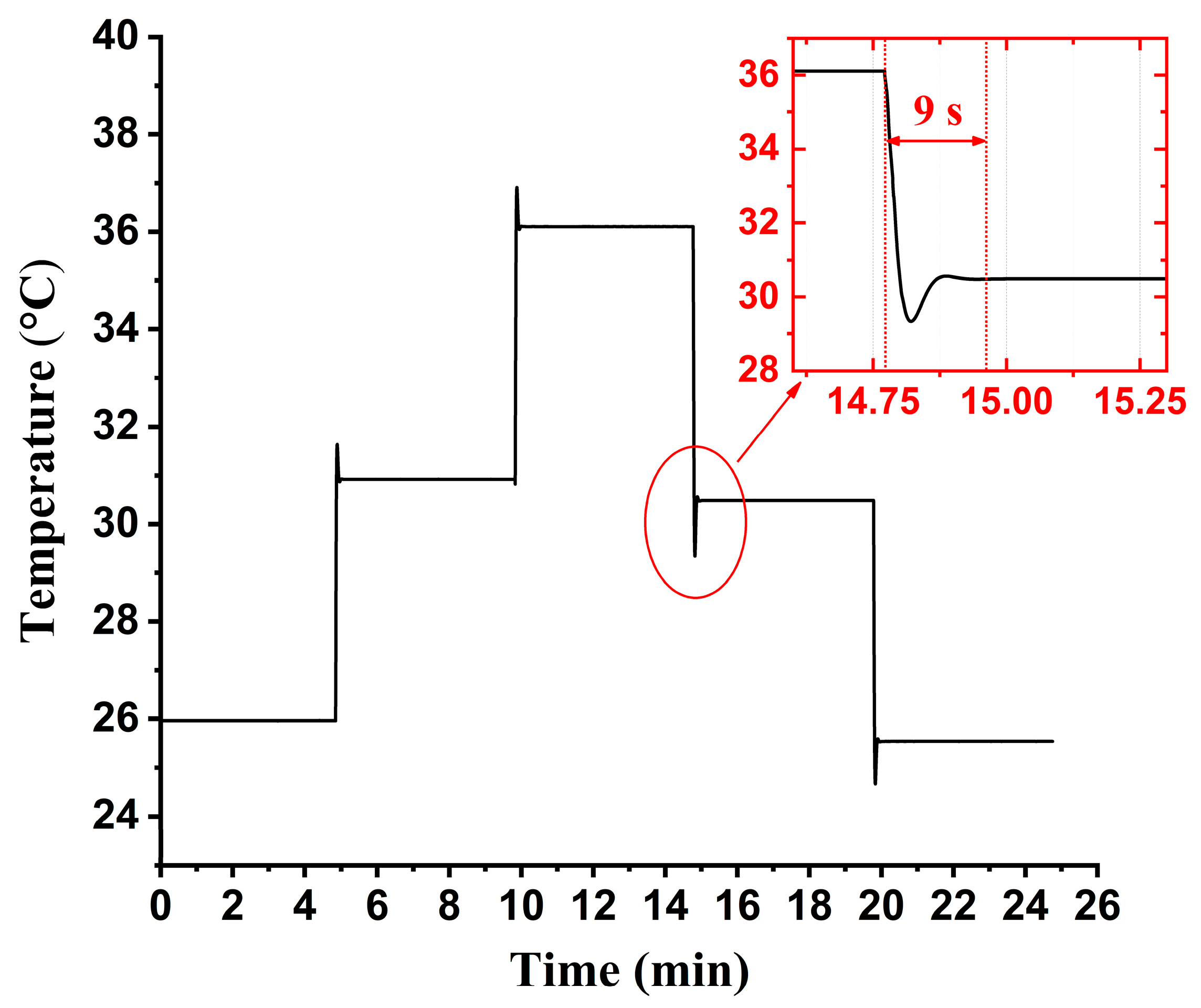


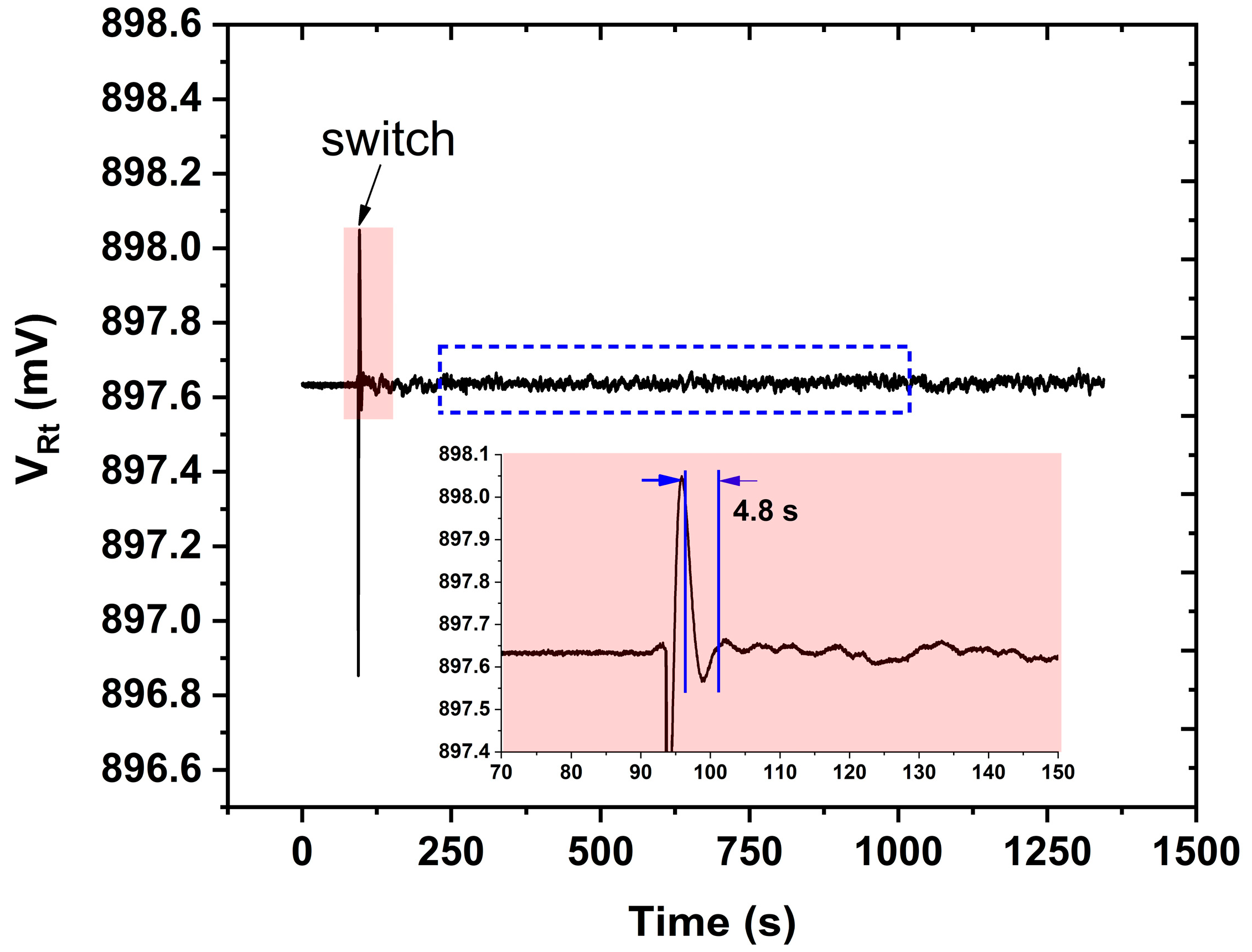

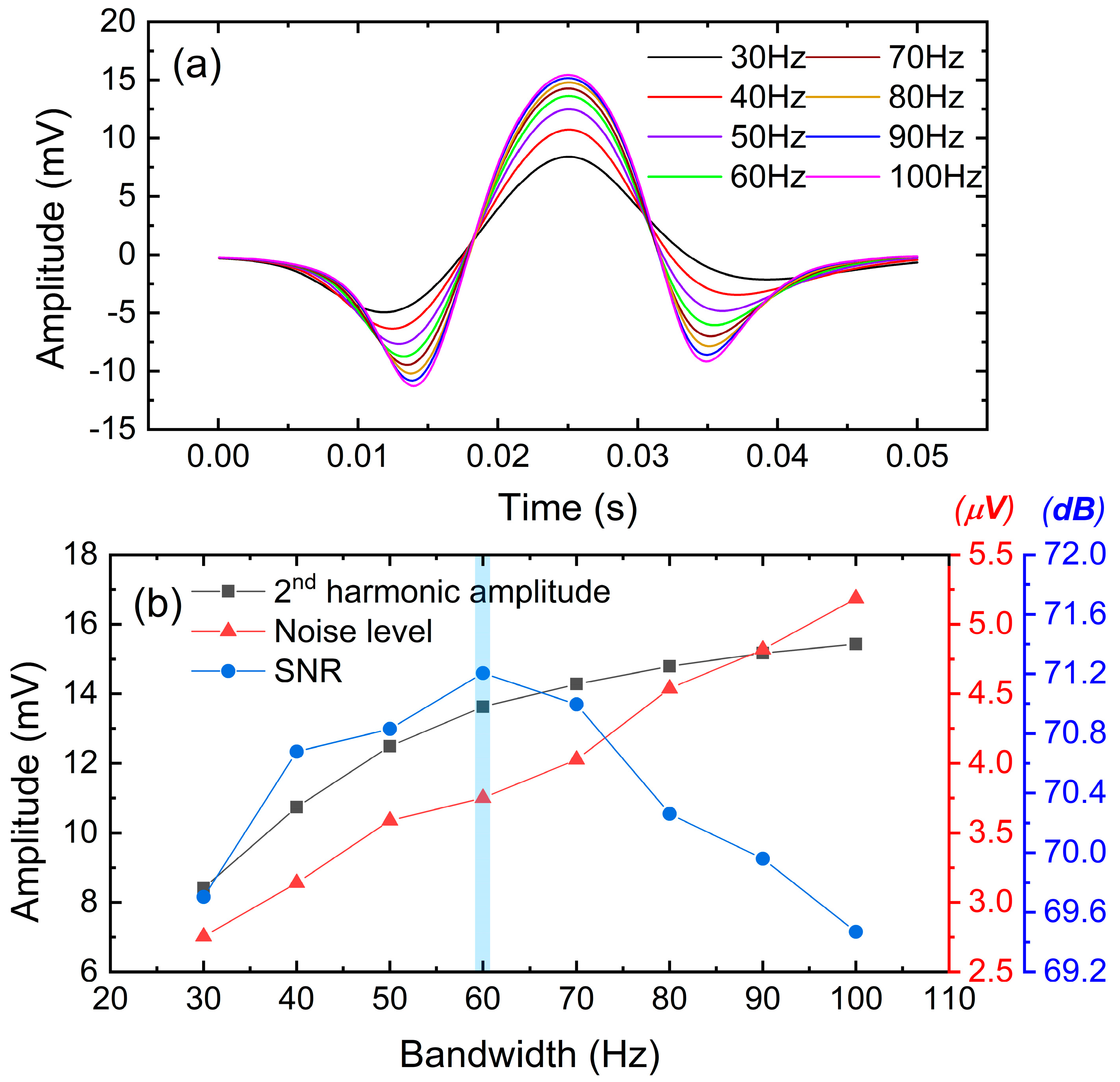
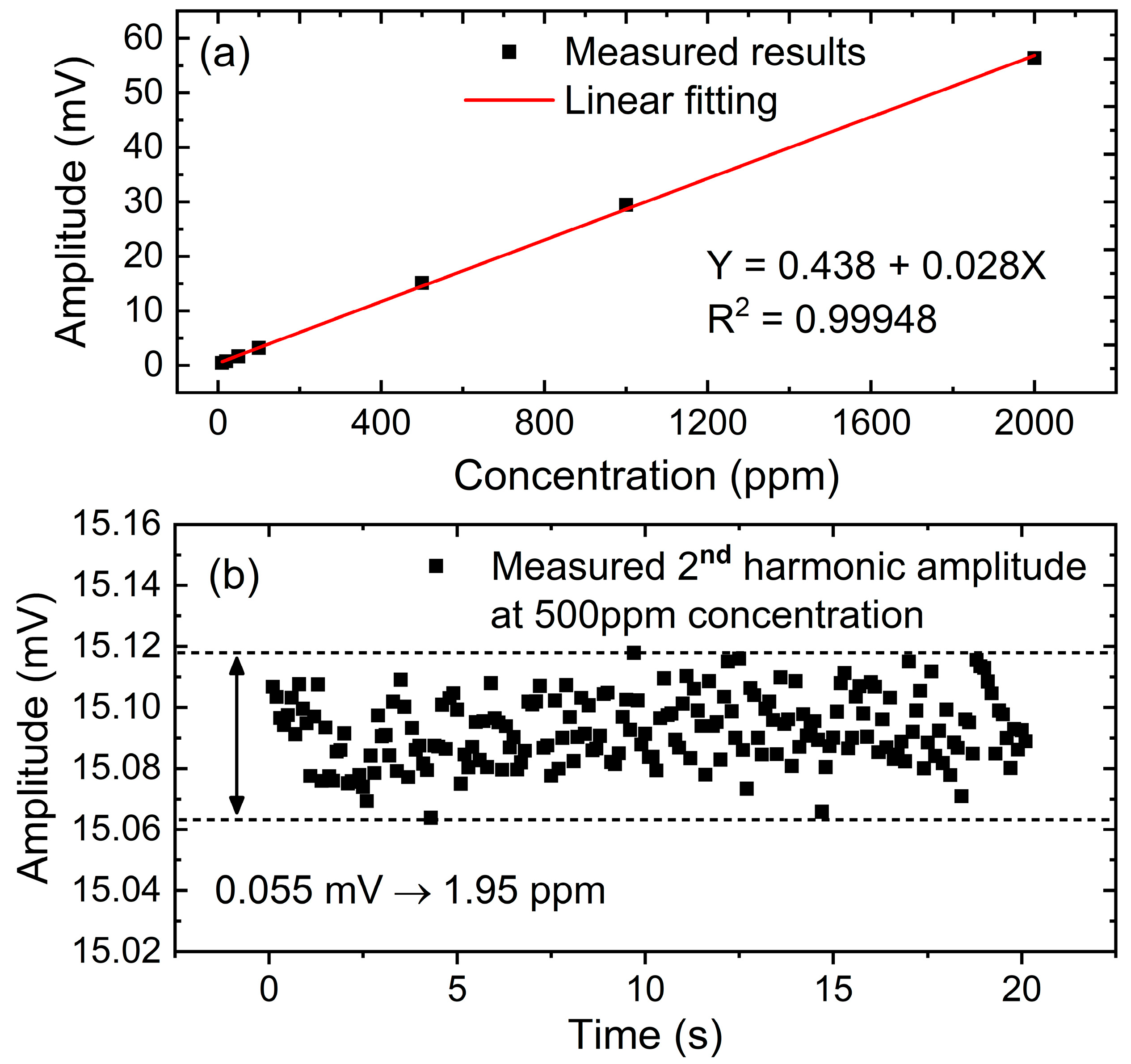
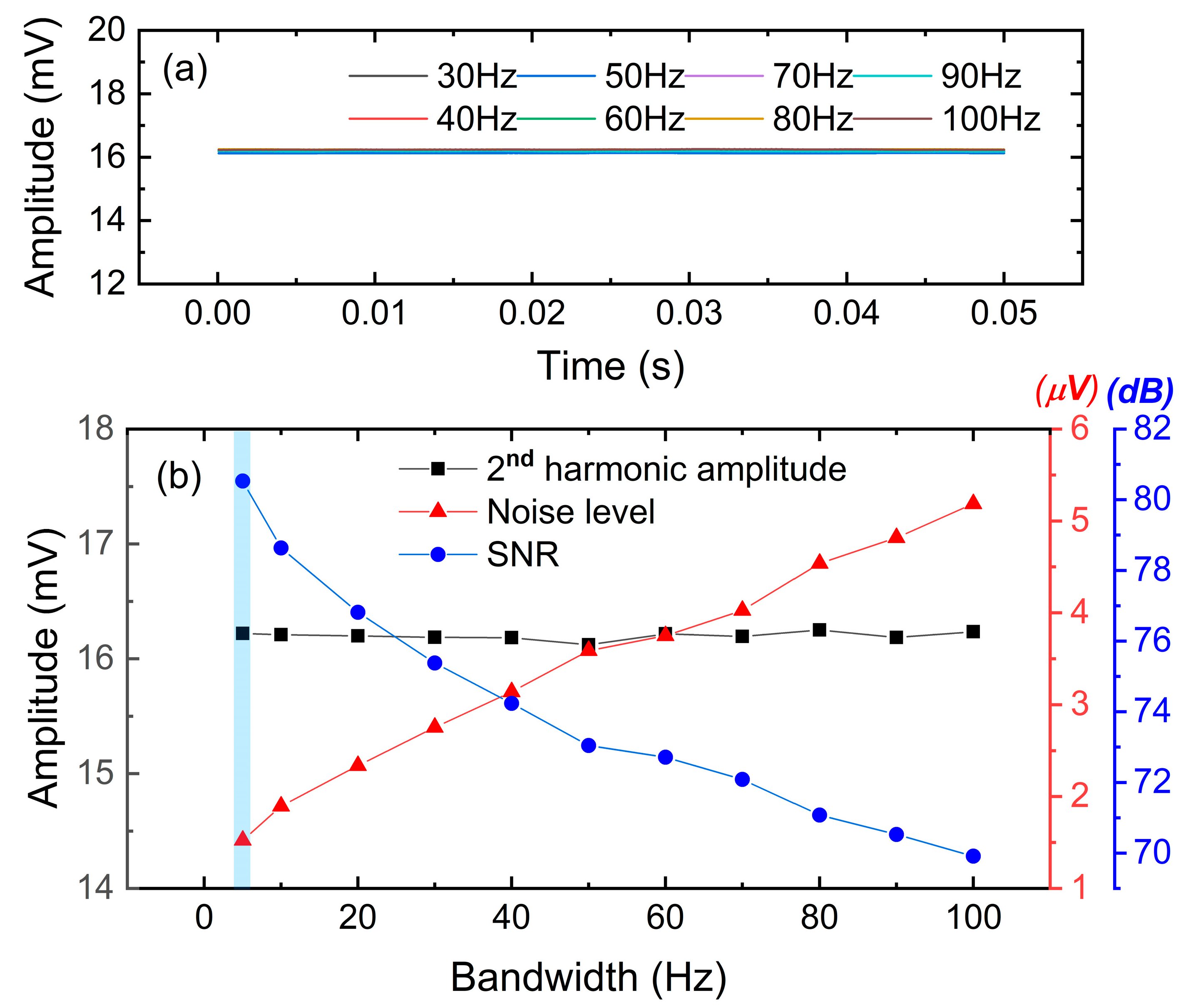
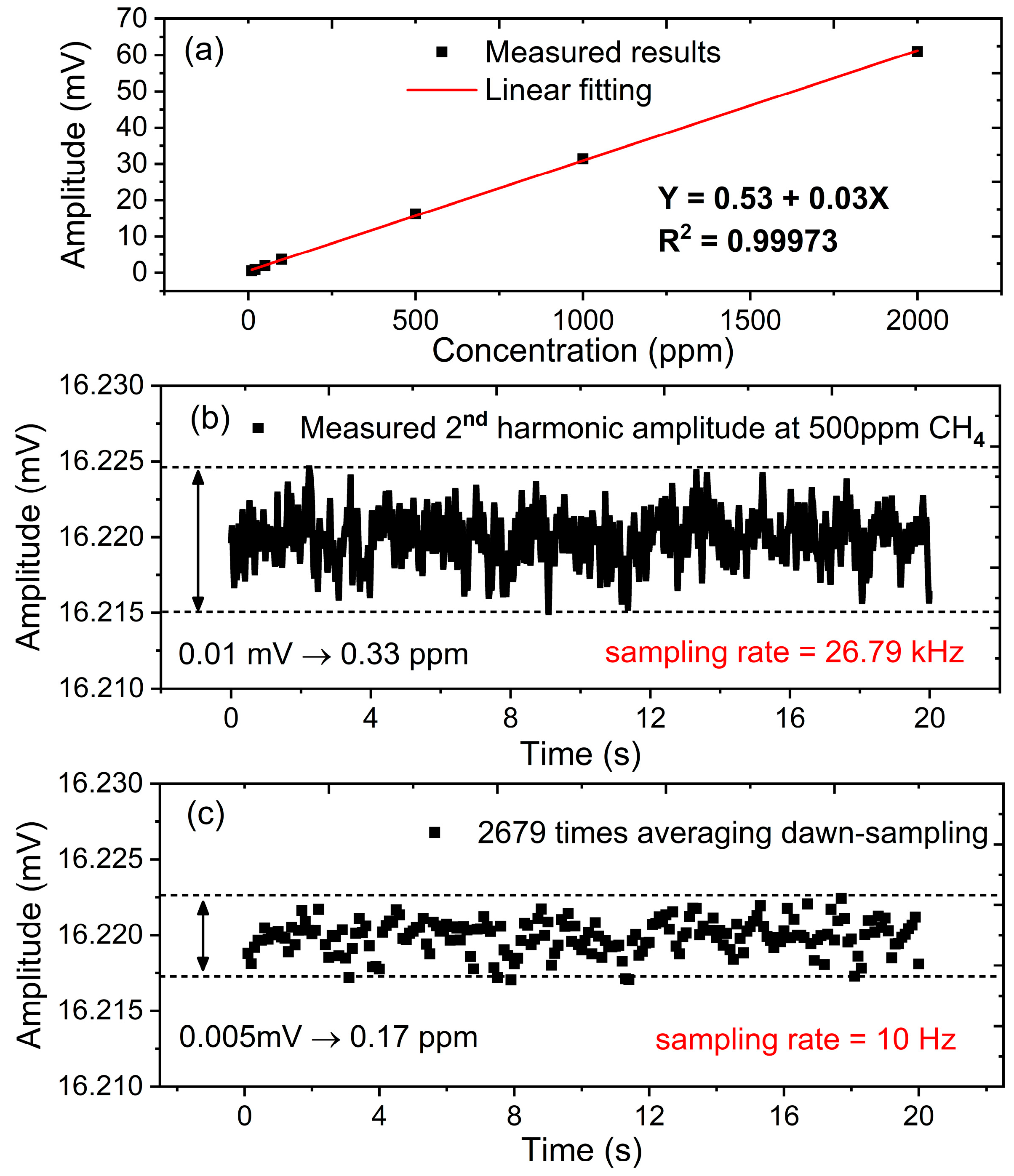
| Designator | Value | Designator | Value |
|---|---|---|---|
| R1 | C1 | ||
| R2 | C2 | ||
| R3 | C3 | ||
| R4 | C4 | ||
| R5 | C5 | ||
| Rset | variable | L1 | |
| Rt | L2 |
Disclaimer/Publisher’s Note: The statements, opinions and data contained in all publications are solely those of the individual author(s) and contributor(s) and not of MDPI and/or the editor(s). MDPI and/or the editor(s) disclaim responsibility for any injury to people or property resulting from any ideas, methods, instructions or products referred to in the content. |
© 2023 by the authors. Licensee MDPI, Basel, Switzerland. This article is an open access article distributed under the terms and conditions of the Creative Commons Attribution (CC BY) license (https://creativecommons.org/licenses/by/4.0/).
Share and Cite
Wang, F.; Wu, J.; Liang, R.; Wang, Q.; Wei, Y.; Cheng, Y.; Li, Q.; Cao, D.; Xue, Q. Ultra-Stable Temperature Controller-Based Laser Wavelength Locking for Improvement in WMS Methane Detection. Sensors 2023, 23, 5107. https://doi.org/10.3390/s23115107
Wang F, Wu J, Liang R, Wang Q, Wei Y, Cheng Y, Li Q, Cao D, Xue Q. Ultra-Stable Temperature Controller-Based Laser Wavelength Locking for Improvement in WMS Methane Detection. Sensors. 2023; 23(11):5107. https://doi.org/10.3390/s23115107
Chicago/Turabian StyleWang, Fupeng, Jinghua Wu, Rui Liang, Qiang Wang, Yubin Wei, Yaopeng Cheng, Qian Li, Diansheng Cao, and Qingsheng Xue. 2023. "Ultra-Stable Temperature Controller-Based Laser Wavelength Locking for Improvement in WMS Methane Detection" Sensors 23, no. 11: 5107. https://doi.org/10.3390/s23115107
APA StyleWang, F., Wu, J., Liang, R., Wang, Q., Wei, Y., Cheng, Y., Li, Q., Cao, D., & Xue, Q. (2023). Ultra-Stable Temperature Controller-Based Laser Wavelength Locking for Improvement in WMS Methane Detection. Sensors, 23(11), 5107. https://doi.org/10.3390/s23115107








